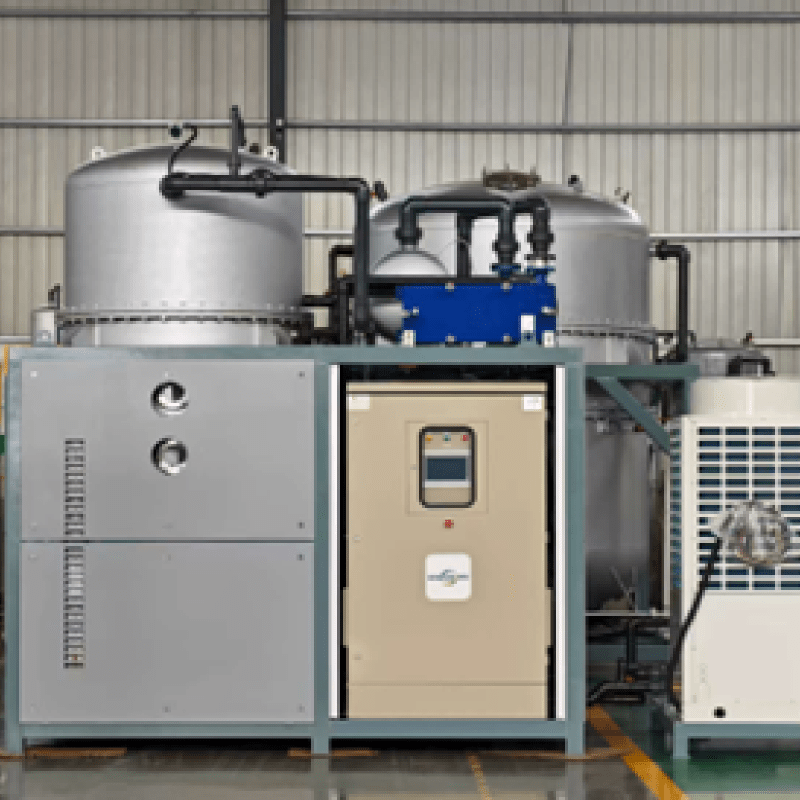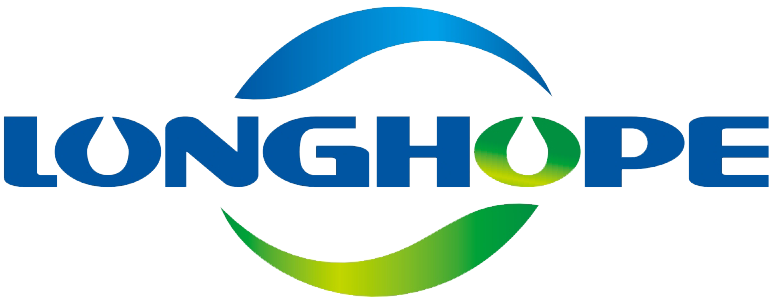کرسٹلائزیشن ٹیکنالوجی کے ذریعے کیمیکل تیاری کو آگے بڑھانا
کیمیکل تیاری کے مسلسل ترقی پذیر منظر نامے میں، کرسٹلائزر مشینیں اہم ترین آلات کے طور پر ابھری ہیں جو پیداواری عمل کو انقلابی شکل دیتی ہیں اور ساتھ ہی پائیداری کو فروغ دیتی ہیں۔ یہ پیچیدہ آلات محلول سے خالص اور یکساں کرسٹل تشکیل دینے کی سہولت فراہم کرتے ہیں، جس سے کیمیکل مرکبات کی موثر علیحدگی اور صفائی ممکن ہوتی ہے۔ کرسٹلائزر مشینوں کے اثرات بنیادی کیمیکل پروسیسنگ سے کہیں آگے تک پھیلے ہوئے ہیں، جو مختلف صنعتوں جیسے دوائیوں سے لے کر خوراک کی تیاری تک کو متاثر کرتے ہیں۔
مودرن کرسٹالائزر مشینز اعلیٰ درجے کے کنٹرول سسٹمز اور جدت طراز ڈیزائن خصوصیات کو ضم کرتے ہیں جو کرسٹل تشکیل کو بہتر بناتے ہیں جبکہ توانائی کے استعمال کو کم سے کم کرتے ہیں۔ یہ ٹیکنالوجیکل ترقی کیمسٹری کی تیاری کے عمل کو توانائی پر مبنی عمل سے ایک زیادہ ماحول دوست آپریشن میں تبدیل کر چکی ہے۔ جیسے جیسے دنیا بھر کی صنعتیں پائیدار طریقوں کی طرف موڑ رہی ہیں، یہ مشینیں پیداواری موثرت اور ماحولیاتی اہداف دونوں حاصل کرنے کے لیے ناقابل فہم اوزار بن گئی ہیں۔
صنعتی کرسٹلائزیشن ٹیکنالوجی کے بنیادی اصول
مکمل اجزا اور عملی اصول
کرسٹلائیزر مشینوں کی کامیابی ان کے خصوصی طور پر تیار کردہ اجزاء کے ہم آہنگ کام کرنے پر منحصر ہوتی ہے۔ ان نظاموں کا مرکز وہ کرسٹلائزیشن برتن ہوتا ہے، جہاں درجہ حرارت اور دباؤ کو درست طریقے سے کنٹرول کرکے بلور بننے کے لیے مثالی حالات پیدا کیے جاتے ہیں۔ جدید ایگی ٹیشن سسٹمز یکساں رَنگ کو یقینی بناتے ہیں، جبکہ پیچیدہ سینسر حقیقی وقت میں پیرامیٹرز کی نگرانی اور ایڈجسٹمنٹ کرتے ہیں۔ ان عناصر کا انضمام مسلسل کرسٹل کے سائز کی تقسیم اور صفائی کی سطح کو یقینی بناتا ہے جو شدید صنعتی معیارات کو پورا کرتی ہے۔
جدید کرسٹلائیزر مشینیں خودکار کنٹرول سسٹمز سے لیس ہوتی ہیں جو کرسٹلائزیشن کے عمل کے دوران بہترین آپریٹنگ حالات کو برقرار رکھتی ہیں۔ یہ سسٹمز سپر سیچوریشن، تبريد کی شرح، اور رَنگ کی شدت سمیت اہم پیرامیٹرز کو منظم کرتے ہیں، جس سے بیچ کے بعد بیچ قابلِ تجدید نتائج حاصل ہوتے ہیں۔ تعمیر میں جدید مواد کے استعمال سے ڈیوریبلٹی میں اضافہ ہوتا ہے اور دیکھ بھال کی ضروریات کم ہوتی ہیں۔
کرسٹلائزیشن کے طریقوں کی اقسام
مختلف صنعتوں کو بلوریکاری کے مختلف طریقہ کار کی ضرورت ہوتی ہے، اور جدید بلوریکاری مشینیں ان ضروریات کو لچکدار ڈیزائن ترتیبات کے ذریعے پورا کرتی ہیں۔ تبريدی بلوریکاری، جو شاید سب سے عام طریقہ ہے، محلول کے درجہ حرارت کو تدریجی طور پر کم کر کے بلور کی تشکیل کو فروغ دیتا ہے۔ بخاراتی بلوریکاری کنٹرول شدہ حرارت کے ذریعے محلّ کو ختم کرتی ہے، جبکہ ضد محلی بلوریکاری مذاب کی محلولیت کم کرنے کے لیے اضافی مرکبات شامل کرتی ہے۔
ہر بلوریکاری طریقہ کار کو مخصوص سامان کی ترمیم اور کنٹرول حکمت عملی کی ضرورت ہوتی ہے۔ حالیہ بلوریکاری مشینیں اکثر ایک ہی یونٹ میں متعدد بلوریکاری صلاحیتوں کو شامل کرتی ہیں، جو آپریشنل لچک اور کارکردگی فراہم کرتی ہیں۔ یہ قابلِ تطبیق پن صنعت کاروں کو پروڈکٹ کی ضروریات اور توانائی کے تقاضوں کی بنیاد پر اپنے عمل کو بہتر بنانے کی اجازت دیتا ہے۔

محیطی تاثرات اور قابلیت پابندی کے خصوصیات
توانائی کی بچت کی اختراعات
عصری کرسٹلائیزر مشینیں توانائی کے استعمال کو کم سے کم کرنے کے لیے بہت سی خصوصیات پر مشتمل ہوتی ہیں۔ حرارتی تبادلہ کار (ہیٹ ایکسچینجرز) عمل کے دوران جاری ہونے والی حرارتی توانائی کو وصول کرتے ہیں، جبکہ متغیر رفتار ڈرائیوز (وری ایبل سپیڈ ڈرائیوز) ملنے اور پمپنگ کے عمل میں بجلی کے استعمال کو بہتر بناتے ہیں۔ جدید عایدی مواد (ایڈوانسڈ انسلیشن میٹیریلز) حرارت کے نقصان کو کم کرتے ہیں، جس سے تمام کرسٹلائزیشن عمل میں توانائی کی مؤثریت میں بہتری آتی ہے۔
manufacturar نے اسمارٹ کنٹرول سسٹمز کو نافذ کیا ہے جو برقی توانائی کے بہترین استعمال کو برقرار رکھنے کے لیے خودکار طریقے سے آپریٹنگ پیرامیٹرز کو ایڈجسٹ کرتے ہیں۔ یہ سسٹمز توانائی سے بھرپور انحرافات کی پیشگوئی اور روک تھام کر سکتے ہیں، جس کے نتیجے میں روایتی کرسٹلائزیشن طریقوں کے مقابلے میں قابلِ ذکر بجلی کی بچت ہوتی ہے۔ جدید کرسٹلائزیشن آپریشنز کی پائیداری کے تناظر کو مزید بہتر بنانے کے لیے قابل تجدید توانائی کے ذرائع کا انضمام بھی شامل ہے۔
کچرے کی کمی اور وسائل کا تحفظ
جدید کرسٹلائیزر مشینیں کرسٹل تشکیل اور علیحدگی کے عمل پر درست کنٹرول کے ذریعے فضلہ کم کرنے میں ماہر ہیں۔ جدید فلٹریشن سسٹمز ماں لاکرز سے قیمتی مصنوعات بازیافت کرتے ہیں، جبکہ خودکار صفائی کے نظام سروس وقفے کے دوران محلل کے استعمال کو کم کرتے ہیں۔ یہ خصوصیات خام مال کی کھپت اور فضلہ پیداوار میں نمایاں کمی میں حصہ ڈالتی ہیں۔
کرسٹلائیزر مشینوں میں بند حلقہ نظام کے نفاذ سے عمل کے پانی اور محلل کو دوبارہ استعمال کیا جا سکتا ہے، جس سے ماحولیاتی اثرات نمایاں طور پر کم ہوتے ہیں۔ نیز، بہتر کرسٹل کی معیار کی وجہ سے بعد کے عمل کی ضرورت کم ہوتی ہے، جو وسائل اور توانائی کے تحفظ میں مزید اضافہ کرتی ہے۔
صنعت استعمالات اور فوائد
فارماسوٹیکل تیاری میں بہترین معیار
دوائی کی پیداوار میں، کرسٹلائزر مشینیں دوا کی خالصتا اور مسلسل معیار کو یقینی بنانے میں اہم کردار ادا کرتی ہیں۔ یہ نظام بلور کے سائز اور شکل و صورت پر درست کنٹرول کرنے کی اجازت دیتے ہیں، جو دوا کی حیاتیاتی دستیابی اور استحکام کے لیے اہم عوامل ہیں۔ یکساں بلور کو مستقل بنیادوں پر تیار کرنے کی صلاحیت حتمی پروڈکٹ کی معیار میں تغیرات کو کم کرتی ہے اور ساتھ ہی پیداواری اخراجات کو بھی کم کرتی ہے۔
جدید کرسٹلائزر مشینیں مسلسل پیداواری عمل کو آسان بناتی ہیں، جس سے دوائی کی کمپنیاں پیداواری موثریت میں اضافہ کر سکتی ہیں جبکہ سخت معیاری معیارات کو برقرار رکھتی ہیں۔ پی اے ٹی (عمل کے تجزیاتی ٹیکنالوجی) کے انضمام سے حقیقی وقت میں نگرانی اور کنٹرول ممکن ہوتا ہے، جو ضوابط کی شرائط کے مطابق ہونے کو یقینی بناتا ہے۔
غذائی اور مشروبات کی پروسیسنگ کے حل
غذائی صنعت کرسٹلائزر مشینوں پر شکر کی کرسٹلائزیشن سے لے کر نمک کی پیداوار تک مختلف اطلاقات کے لیے بہت زیادہ انحصار کرتی ہے۔ یہ نظام مصنوعات کی یکساں نوعیت کو یقینی بناتے ہوئے سخت خوراک کی حفاظت کے معیارات کو پورا کرتے ہیں۔ جدید کرسٹلائزرز میں صحت کے لحاظ سے مناسب ڈیزائن کی خصوصیات شامل کی جاتی ہیں جو صفائی کو آسان بناتی ہیں اور آلودگی کو روکتی ہیں، جو غذائی پروسیسنگ میں ضروری تقاضے ہیں۔
کرسٹل کے سائز کی تقسیم پر بہتر کنٹرول پیدا کاروں کو مخصوص بافت کی خصوصیات والی مصنوعات تیار کرنے کی اجازت دیتا ہے، جس سے صارفین کی دلچسپی بڑھتی ہے۔ جدید کرسٹلائزر مشینوں کی موثر کارکردگی غذائی پیداوار کے آپریشنز میں پروسیسنگ کے وقت اور توانائی کی لاگت کو کم کرنے میں بھی حصہ ڈالتی ہے۔
مستقبل کے رجحانات اور تکنیکی ترقی
ڈیجیٹل انضمام اور صنعت 4.0
کرسٹلائیزر مشینوں کا مستقبل صنعتی 4.0 کی ٹیکنالوجیز کے ساتھ ان کے ادراج میں واقع ہے۔ جدید سینسرز اور آئیو ٹی کنکٹیویٹی حقیقی وقت کی نگرانی اور توقعیہ رسانسی کی صلاحیتیں فراہم کرتی ہیں۔ مشین لرننگ الخوارزمی خود بخود عمل کے پیرامیٹرز کو بہتر بناتے ہیں، جس سے کارکردگی اور پروڈکٹ کی معیار میں بہتری آتی ہے اور آپریٹر کے مداخلت کی ضرورت کم ہوتی ہے۔
کرسٹلائزیشن عمل کے ڈیجیٹل ٹوئنز پروڈیوسرز کو نفاذ سے قبل آپریشنز کی ماہانہ اور بہتری کے لیے ماہانہ حساب کتاب کرنے کی اجازت دیتے ہیں۔ یہ صلاحیت ترقی کے وقت اور اخراجات کو کم کرتی ہے جبکہ بہترین عمل کے ڈیزائن کو یقینی بناتی ہے۔ مصنوعی ذہانت کا ادراج عمل کے کنٹرول اور پیش گوئی کی صلاحیتوں میں مسلسل اضافہ کر رہا ہے۔
نئی ماحول دوست ٹیکنالوجیز
نئی کرسٹلائزیشن ٹیکنالوجیز کے بارے میں تحقیق کا مرکزی نکتہ ماحولیاتی اثرات کو کم کرنا اور ساتھ ساتھ کارکردگی میں بہتری لانا ہے۔ نئے ڈیزائنز جدید مواد اور توانائی بازیافت کرنے والے اختراعی نظام کو شامل کرتے ہیں۔ ہائبرڈ کرسٹلائزیشن عمل کی ترقی مختلف طریقوں کو ملاتی ہے تاکہ کم سے کم وسائل کے استعمال کے ساتھ بہترین نتائج حاصل کیے جا سکیں۔
کرسٹلائزیشن کے عمل میں متبادل توانائی کے ذرائع اور گرین محلول کے استعمال کو پیدا کرنے والے ادارے تلاش کر رہے ہیں۔ یہ اختراعات کیمیکل پیداوار کے ماحولیاتی اثرات کو مزید کم کرنے کی ضمانت دیتی ہیں جبکہ پیداوار کی معیار برقرار رکھتی ہیں یا بہتر کرتی ہیں۔
اکثر پوچھے گئے سوالات
کرسٹلائزر مشینیں پائیدار کیمیکل پیداوار میں کس طرح حصہ ڈالتی ہیں؟
کرسٹلائیزر مشینیں توانائی کی موثر کارکردگی، فضلہ کم کرنے کی خصوصیات اور وسائل کے تحفظ کی صلاحیتوں کے ذریعے پائیداری کو بڑھاتی ہیں۔ ان میں حرارت بازیابی کے نظام شامل ہوتے ہیں، عمل کے پیرامیٹرز کو خودکار طور پر بہتر بناتے ہیں، اور محلل اور عمل کے پانی کی دوبارہ بازیافت کو ممکن بناتے ہیں، جس سے ماحولیاتی اثرات کم ہوتے ہیں جبکہ زیادہ معیار کی مصنوعات برقرار رہتی ہیں۔
جدید کرسٹلائیزر مشینیں روایتی نظام کی نسبت زیادہ کارآمد کیوں ہیں؟
جدید کرسٹلائیزر مشینوں میں جدید کنٹرول سسٹمز، بہتر حرارت منتقلی کے ڈیزائن، اور خودکار آپریشن کی صلاحیتیں شامل ہیں۔ یہ ایجادات بہتر کرسٹل کی کوالٹی، توانائی کے استعمال میں کمی، اور روایتی کرسٹلائزیشن آلات کی نسبت کم آپریشنل اخراجات کا باعث بنتی ہیں۔
کرسٹلائیزر مشینیں صنعت 4.0 کے مطابق کیسے ڈھل رہی ہیں؟
کرسٹلائیزر مشینیں مسلسل ڈیجیٹل ٹیکنالوجیز جیسے آئیو ٹی سینسرز، مصنوعی ذہانت اور ڈیجیٹل ٹوئن کی صلاحیتوں کو شامل کر رہی ہیں۔ یہ ترقیات حقیقی وقت کی نگرانی، تشخیصی مرمت اور کرسٹلائزیشن عمل کی خودکار بہتری کو ممکن بناتی ہیں، جس سے موثریت اور پروڈکٹ کی معیار دونوں میں بہتری آتی ہے۔

